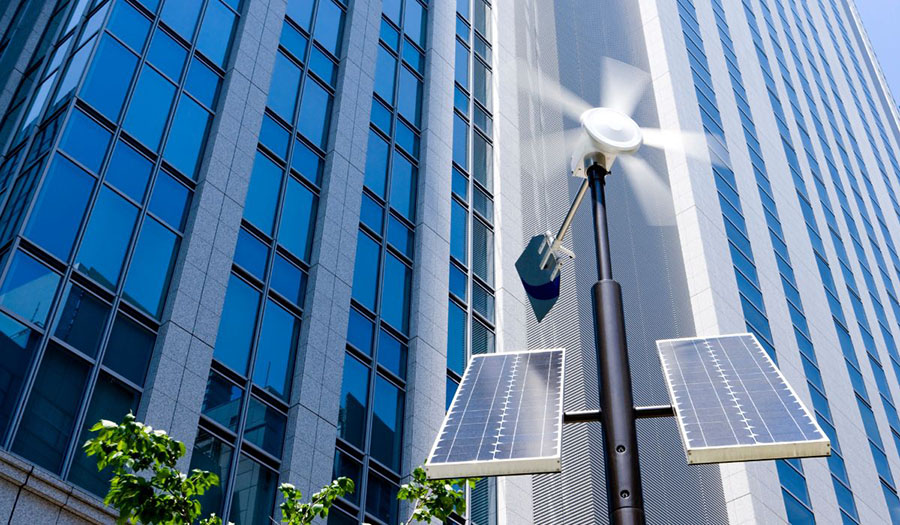The quest for sustainable energy sources has gained momentum in recent decades, and renewable energy technologies have emerged as promising alternatives to fossil fuels. Among these, solar and wind power have become two of the most prominent and rapidly advancing options. Let's explore the significant advancements in solar and wind power technologies, and how they are revolutionizing the global energy landscape.
Solar Power: Harnessing the Power of the Sun
Solar power has captured the imagination of scientists and innovators for centuries, but it is in recent years that it has truly taken off as a viable energy source. One of the most significant advancements in solar technology is the development of photovoltaic (PV) cells. These cells are made from semiconductors like silicon, which directly convert sunlight into electricity.
Over the years, researchers have made remarkable progress in improving the efficiency of solar panels. From the initial efficiency levels of around 15% to 20% in the early 2000s, cutting-edge solar panels now boast an impressive 40% efficiency and beyond. These advancements have made solar energy not only cost-effective but also competitive with traditional fossil fuel-based power generation.
Moreover, there have been innovations in solar storage solutions. Batteries and energy storage systems have enabled capturing excess solar energy during peak production hours and using it during periods of low sunlight, providing a steady and reliable power supply. This development has significantly enhanced the reliability of solar power, making it more suitable for large-scale applications.
Wind Power: Unleashing Nature's Breezes
Wind power has a rich history dating back to ancient civilizations that harnessed wind energy to sail ships and grind grain. Today, modern wind turbines stand as a symbol of the technological prowess in renewable energy. The advancements in wind power technology have been revolutionary, making it one of the fastest-growing renewable energy sources worldwide.
Turbine Design: One of the most significant improvements in wind power technology is the evolution of turbine design. Early turbines were smaller and less efficient, but current models have larger blades, reaching impressive heights and capturing stronger winds at higher altitudes. Improved aerodynamics and materials have significantly boosted the overall efficiency of wind turbines, enabling them to produce more electricity with fewer turbines.
Offshore Wind Farms: One of the most exciting developments in wind power is the rise of offshore wind farms. By positioning turbines in coastal waters, where the wind is generally stronger and more consistent, offshore wind farms can generate substantial amounts of clean energy. These projects also have the advantage of avoiding potential land-use conflicts and harnessing vast wind resources.
Grid Integration and Energy Storage: Grid integration and energy storage solutions have also played a crucial role in advancing wind power. Smart grid technologies allow better management of wind power fluctuations, ensuring a stable and continuous electricity supply. Additionally, energy storage technologies, such as pumped hydro and advanced batteries, help store excess energy during high wind periods and release it during low wind times, further enhancing the reliability and stability of wind power.
Hybrid Systems: The Future of Renewable Energy
As solar and wind power technologies have matured, a new trend has emerged: hybrid renewable energy systems. These combine the strengths of both solar and wind power to provide a more reliable and consistent energy supply. For instance, solar power is often at its peak during the day when the sun is shining, while wind power tends to be more productive at night and during stormy weather. By integrating these sources, hybrid systems can deliver a more stable energy output, reducing reliance on conventional backup sources.
The advancements in solar and wind power technologies have marked a pivotal turning point in our journey toward a sustainable energy future. With increasing efficiency, reduced costs, and improved storage solutions, these renewable energy sources are no longer mere alternatives but formidable competitors to conventional fossil fuels.
As these technologies continue to evolve, we can expect a cleaner, greener, and more sustainable world. Governments, businesses, and individuals must continue to invest in and embrace renewable energy solutions to ensure a brighter and more sustainable future for generations to come. By harnessing the power of the sun and the wind, we can shape a world where clean energy is abundant and accessible to all.



